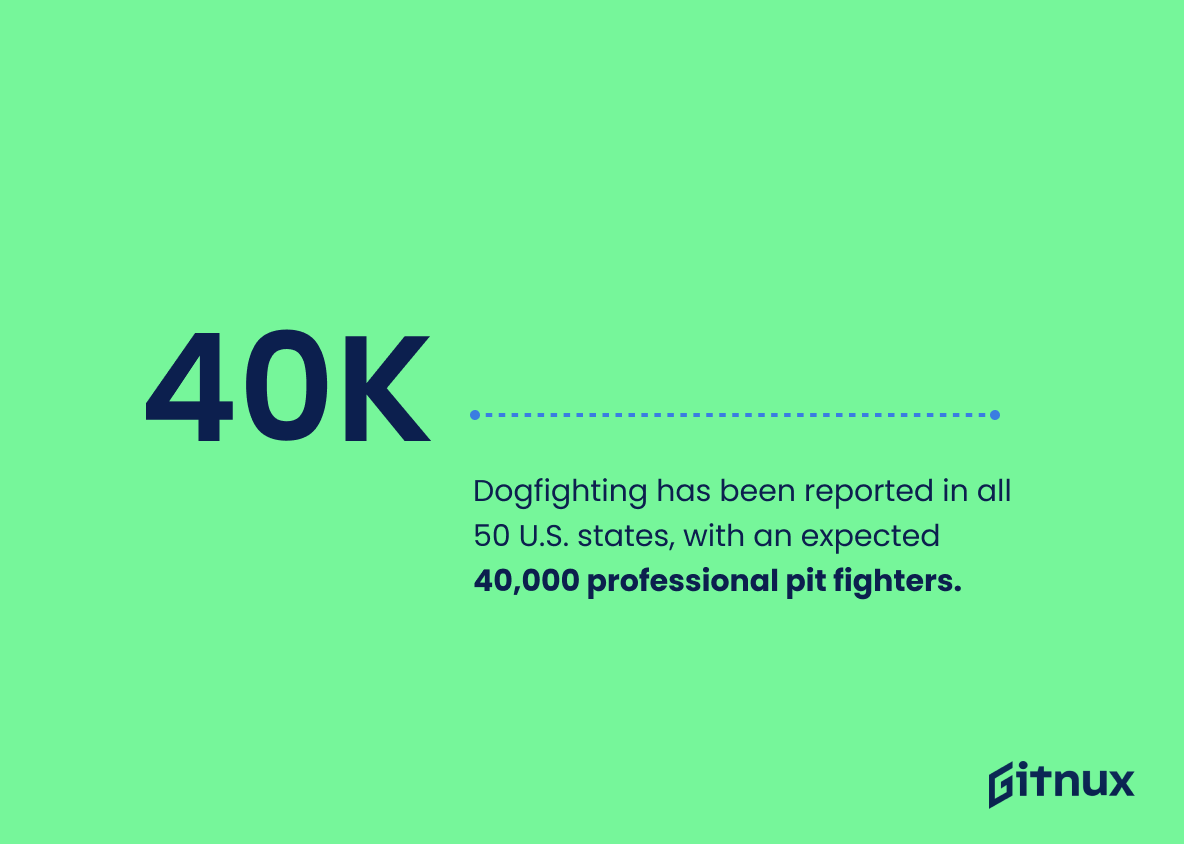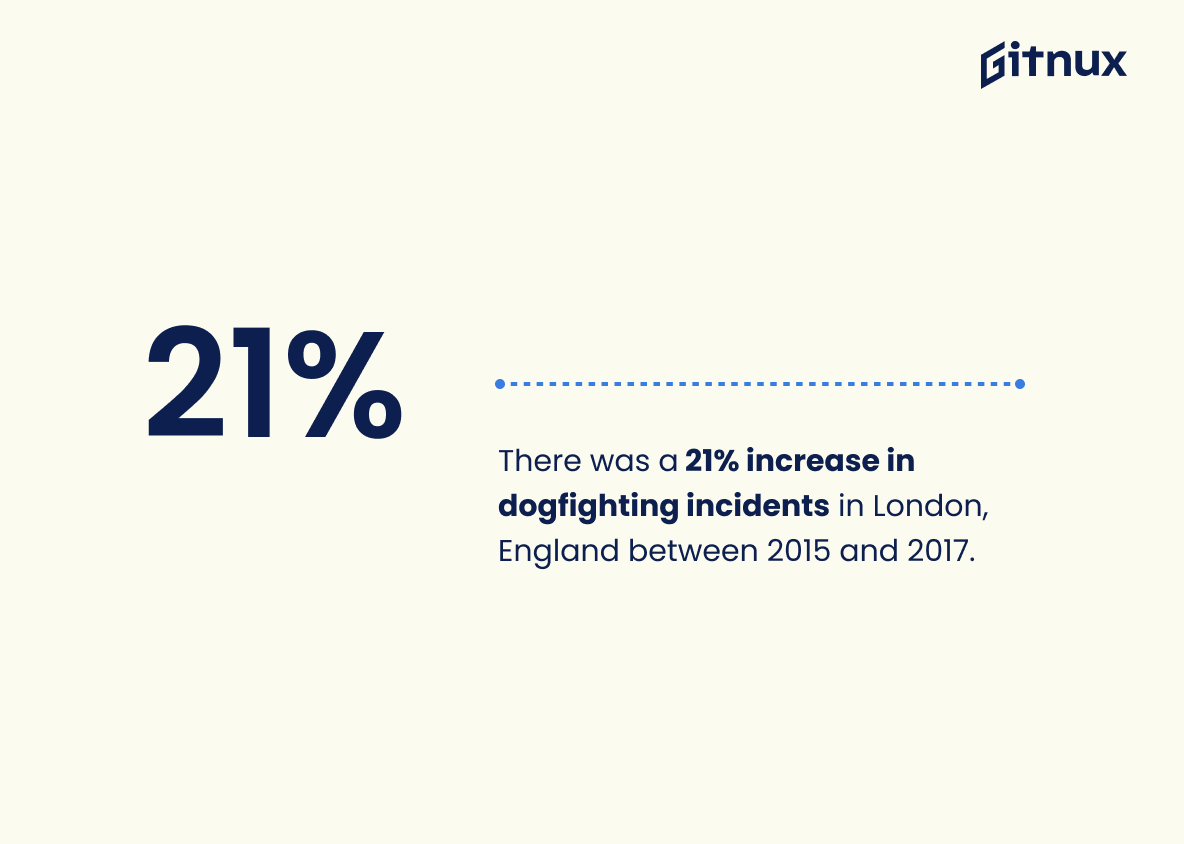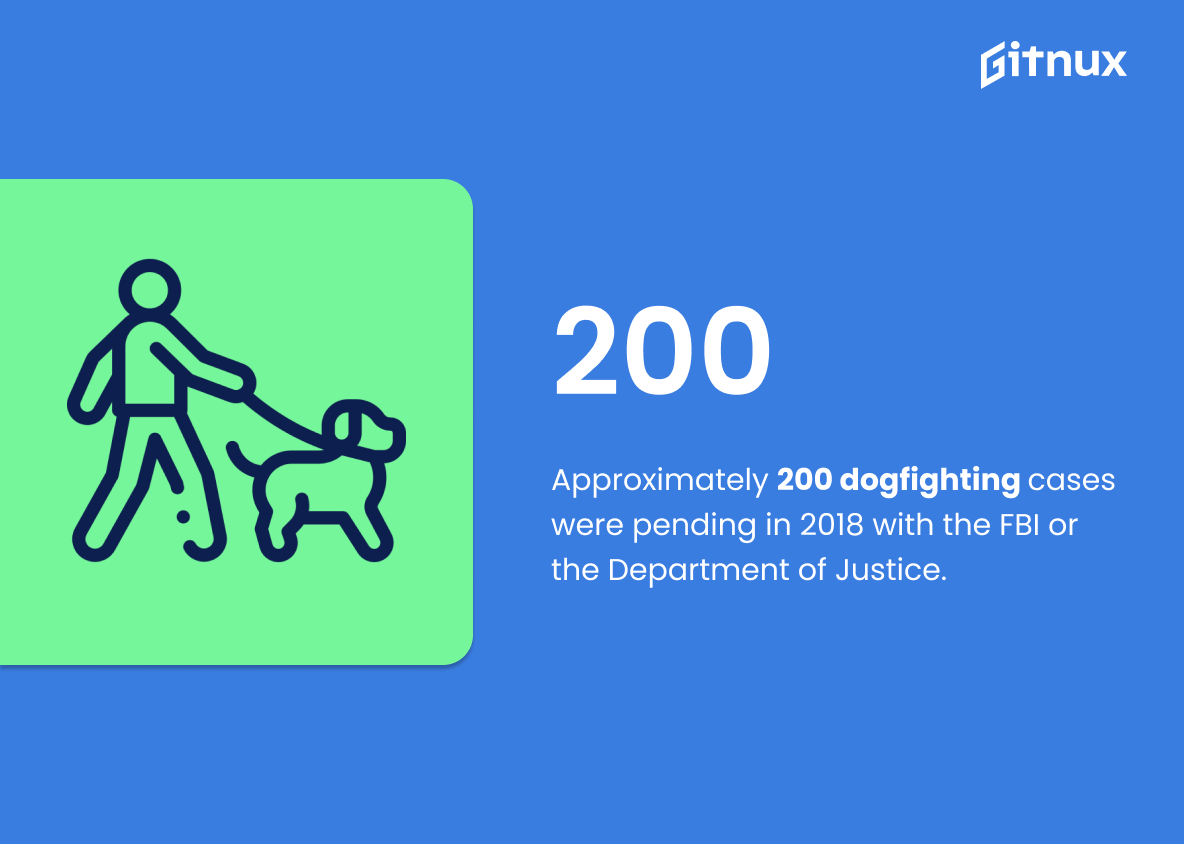Dog fighting is an illegal and cruel activity that has been around for centuries. It involves pitting two dogs against each other in a fight to the death, often with spectators betting on the outcome. Despite its illegality, dogfighting continues to be a problem across many countries worldwide. This blog post will explore some of the statistics related to this heinous crime, including information about where it occurs most frequently and what punishments are associated with it. We’ll also look at how organizations like the ASPCA have worked hard to combat dogfighting over recent years. By understanding these facts and figures we can gain insight into why this practice persists despite being outlawed in so many places – as well as what more needs to be done if we’re ever going to put an end to it once and for all.
Dog Fight Statistics Overview
Dog on dog aggression accounts for 41.8% of aggressive incidents in the UK.
This statistic is a stark reminder of the prevalence of dog on dog aggression in the UK. It highlights the need for owners to be aware of the potential for their dogs to become involved in aggressive incidents, and to take steps to prevent them. It also serves as a warning to those considering getting a dog, that they should be prepared to deal with the possibility of their pet becoming involved in a fight.
Approximately 250,000 dogs are placed in fighting pits in the United States each year.
This statistic is a stark reminder of the prevalence of dog fighting in the United States. It is a sobering reminder that despite the efforts of animal welfare organizations, the cruel practice of dog fighting continues to exist in our country. This statistic serves as a call to action for all of us to do our part in ending this inhumane practice.
Dogfighting has been reported in all 50 U.S. states, with an expected 40,000 professional pit fighters.
This statistic is a stark reminder of the prevalence of dogfighting in the United States. It is a sobering reminder that this cruel and illegal activity is not confined to a few states, but is a nationwide problem. With an estimated 40,000 professional pit fighters, it is clear that this is an issue that needs to be addressed.
Up to $500,000 can be bet on a single dogfight in high-stakes matches.
This statistic is a stark reminder of the immense financial stakes involved in dogfighting. It highlights the potential for large sums of money to be won or lost in a single match, and the lengths to which some people are willing to go to make a profit. It also serves as a warning of the potential for criminal activity and exploitation of animals in the pursuit of financial gain.
In 2007, NFL quarterback Michael Vick was sentenced to 23 months in prison for his involvement in a dogfighting ring.
This statistic serves as a stark reminder of the consequences of participating in dogfighting. It highlights the severity of the crime and the importance of taking a stand against it. It also serves as a warning to those who may be considering engaging in such activities, that the punishment for doing so can be severe. Furthermore, it serves as a reminder of the need for continued education and awareness about the dangers of dogfighting.
Approximately 200 dogfighting cases were pending in 2018 with the FBI or the Department of Justice.
This statistic is a stark reminder of the prevalence of dogfighting in the United States. It shows that despite the efforts of the FBI and Department of Justice, the problem is still ongoing and requires further attention. It is a call to action for those who care about animal welfare and a reminder that more needs to be done to protect these innocent creatures.
In Japan, it is legal to hold dogfights, but it is regulated and only Tosa dogs are allowed to participate.
This statistic is significant in the context of a blog post about Dog Fight Statistics because it highlights the fact that, while dogfighting is legal in Japan, it is heavily regulated and only certain breeds are allowed to participate. This serves as an example of how dogfighting can be regulated in a way that is humane and respectful of the animals involved.
There was a 21% increase in dogfighting incidents in London, England between 2015 and 2017.
This statistic is a stark reminder of the growing prevalence of dogfighting in London, England. It serves as a call to action for those who are passionate about animal welfare and are looking to make a difference in their community. The 21% increase in dogfighting incidents between 2015 and 2017 is a clear indication that more needs to be done to protect our four-legged friends from this cruel and inhumane practice.
Up to a third of all reported dogfighting injuries are inflicted by the dog’s owner during training.
This statistic serves as a stark reminder of the cruelty that can be inflicted on dogs in the name of training. It highlights the need for greater awareness and education around the dangers of dogfighting and the importance of humane training methods. It also underscores the need for stronger laws and enforcement to protect dogs from abuse and exploitation.
In Russia, dogfighting is illegal, but lightweight dogfighting (without gambling) is considered a sport and is widely accepted.
This statistic is a stark reminder of the prevalence of dogfighting in Russia, and the fact that it is accepted as a sport in some form. It highlights the need for greater awareness and education around the issue, as well as the need for stronger legislation to protect animals from this cruel practice.
In Chicago, dogfighting was linked to 65% of drug and firearm offenses from 2001 to 2004.
This statistic is a powerful indicator of the prevalence of dogfighting in Chicago during the period of 2001 to 2004. It demonstrates that dogfighting was a major factor in the commission of drug and firearm offenses, and highlights the need for increased awareness and enforcement of laws against this cruel and illegal activity.
In Colombia, dogfighting is illegal; however, it is not considered a criminal offense but rather an administrative one.
This statistic is significant in the context of a blog post about Dog Fight Statistics because it highlights the importance of legislation in the fight against animal cruelty. It demonstrates that, even in countries where dogfighting is illegal, the enforcement of the law is not always sufficient to deter the practice. This serves as a reminder that, in order to effectively combat animal cruelty, governments must ensure that appropriate punishments are in place for those who break the law.
In a 2009 study, 59.2% of dogfighting investigations in the U.S. happened in urban areas, and 40.8% happened in rural areas.
This statistic is a powerful indicator of the prevalence of dogfighting in the United States. It shows that while rural areas are not immune to the problem, urban areas are disproportionately affected. This information is essential to understanding the scope of the issue and can help inform strategies to combat it.
As of 2019, the District of Columbia and 50 U.S. States officially classified dogfighting as a felony offense.
This statistic is a testament to the progress that has been made in the fight against dogfighting. It shows that the majority of the United States has taken a stance against this cruel and inhumane practice, and is actively working to protect animals from abuse. This is an important step in the right direction, and one that should be celebrated.
Dogfighting is punishable by up to 7 years imprisonment and a $50,000 fine in the state of California.
This statistic serves as a powerful reminder of the serious consequences of engaging in dogfighting in the state of California. It highlights the gravity of the offense and the potential repercussions of participating in such an activity. It also serves as a warning to those who may be considering engaging in dogfighting, as the punishment is severe and could have a lasting impact on their lives.
In 2017, the ASPCA assisted with over 500 animal cruelty cases related to dogfighting in the United States.
This statistic is a stark reminder of the prevalence of dogfighting in the United States. It serves as a call to action for animal lovers and advocates to take a stand against this cruel and inhumane practice. It also highlights the importance of the work done by the ASPCA in rescuing and rehabilitating animals affected by dogfighting.
Conclusion
The statistics presented in this blog post demonstrate the prevalence of dogfighting around the world and its devastating effects on animals. Dogfighting is illegal in all 50 U.S. states, as well as many countries across the globe, yet it continues to be a major problem with an estimated 250,000 dogs placed into fighting pits each year in America alone. The consequences for participating or organizing dogfights can range from fines to imprisonment depending on where you are located; however, even these punishments do not seem to deter people from engaging in this cruel activity. It is clear that more needs to be done globally if we want to put an end to animal cruelty caused by dogfighting once and for all.
References
0. – https://www.rbth.com
1. – https://www.aspca.org
2. – https://www.smithsonianmag.com
3. – https://www.vice.com
4. – https://www.thecitypaperbogota.com
5. – https://www.centerforanimalrehab.org
6. – https://www.criminaldefenselawyer.com
7. – https://www.leginfo.legislature.ca.gov
8. – https://www.apnews.com
9. – https://www.link.springer.com
10. – https://www.humanesociety.org
11. – https://www.pubmed.ncbi.nlm.nih.gov
12. – https://www.researchgate.net
13. – https://www.nippon.com
14. – https://www.abcnews.go.com










